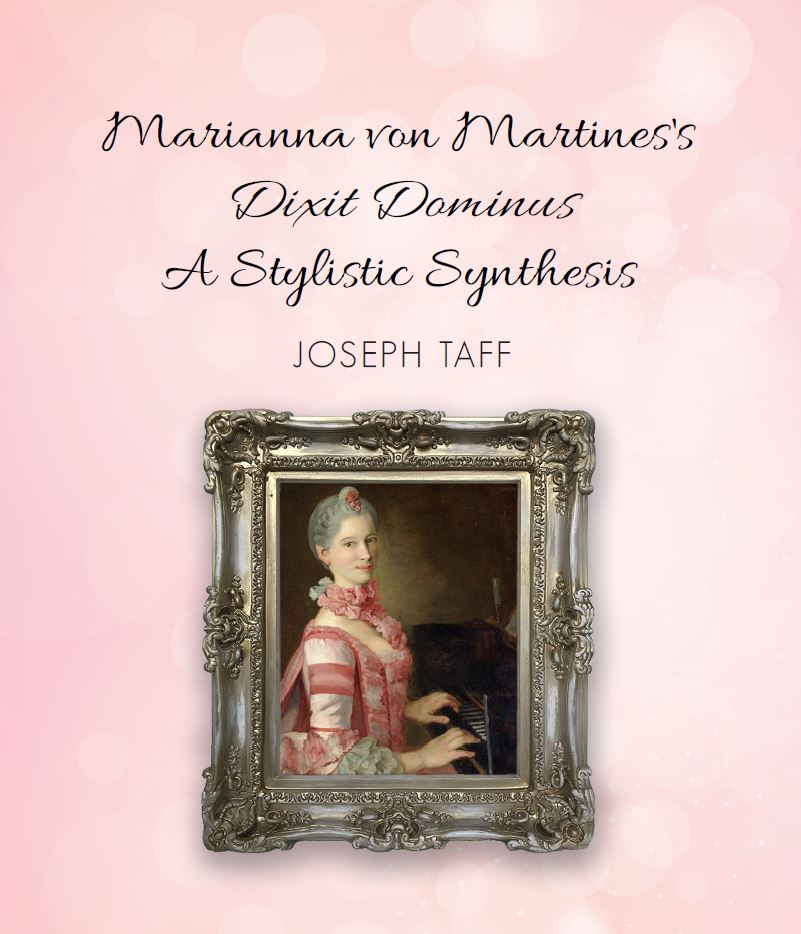
The April issue of Choral Journal is online and features an article titled “Marianna von Martines’s Dixit Dominus: A Stylistic Synthesis” by Joseph Taff. You can read it in its entirety online at acda.org/choraljournal. Following is a portion from the introduction.
_______________________
Born in Vienna in 1744, Marianna von Martines received a thorough grounding in Baroque compositional techniques, but lived and worked in an era when a newer, more “galant” style had become fashionable.
Her contemporaries often noted and praised the balance of old and new stylistic qualities in her composition. English music historian Charles Burney, who visited the Martines family in 1772, called Marianna’s arias “very well written, in a modern style; but neither common, nor unnaturally new,” and cited Martines’s teacher, mentor, and housemate Metastasio’s description of one of her psalm settings as “a most agreeable Mescolanza…of antico e moderno.” Metastasio himself wrote to a friend that Martines “chose to avail herself of both the grace of the modern style, avoiding its licenses, and the harmonious solidity of the old ecclesiastical style, divested of its Gothicisms.” Burney’s and Metastasio’s remarks are often cited and echoed in more recent literature on Martines and her style. They do not specify what stylistic elements diff erentiated “antico” from “moderno,” or what elements Martines drew from each source. Nonetheless, they make it clear that synthesis of old and new styles was a key piece of Martines’s compositional approach.
The Martines family was well connected at the Habsburg court in Vienna. Her eldest brother “served as tutor to at least three of the sixteen royal children born to [Empress] Maria Theresa,” and the other three Martines brothers were all esteemed soldiers or civil servants; the entire family was granted noble status in 1774, the year Marianna composed her Dixit Dominus. The royal family’s enjoyment of Marianna’s music likely contributed to her family’s status. An 1846 biographical article on Martines in the Wiener allgemeine Musik-Zeitung mentions that the Empress would often ask Martines to perform for her, and that her son Joseph II would sometimes turn pages for Martines.6
Robert Gjerdingen notes that “the cultured nobility” of eighteenth-century Europe were expected to embody a certain “collection of traits, attitudes, and manners” encapsulated by the versatile adjective “galant,” and that galant manners were expressed through music as well, in a courtly style “grounded in a repertory of stock musical phrases.” Martines would undoubtedly have been expected to display galant qualities in both her musical performances and social dealings at court.
Martines’s musical education nevertheless provided her with ample exposure to Baroque musical style. In an autobiographical letter, she lists Handel, Lotti, and Caldara among her chief influences; even when discussing her more contemporary role models, she cites three composers at least thirty years older than she (Hasse, Jomelli, and Galuppi). This emphasis on emulating older music is unsurprising given that her education was directed chiefly by Metastasio, who was born in 1698.
_________________
ACDA members can log in with their username and password to view and download the newest edition. You can also read our electronic version. Below is a preview of the articles you will find in this issue. If you are not already a member of ACDA, join today to start receiving your monthly Choral Journal! Associate members can join for only $45 a year.


Leave a Reply
You must be logged in to post a comment.